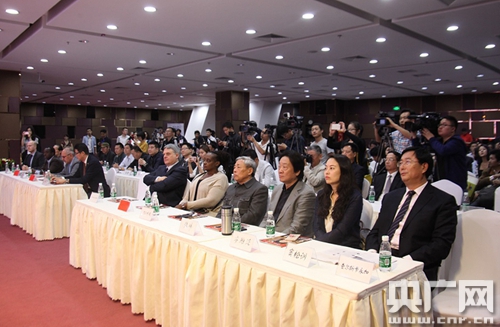It Is Related To China’s National Destiny For Thousands Of Years! How Important Are The Five Central Asian Countries To China?
It Is Related To China’s National Destiny For Thousands Of Years! How Important Are The Five Central Asian Countries To China?
More than two thousand years ago, Zhang Qian's envoys opened the Silk Road, which connected China and Central Asia and opened up cultural and trade exchanges. Achieving this goal is not simple. There are issues such as political stability, economic strength and infrastructure construction in the countries along the way.
More than two thousand years ago, Zhang Qian's envoys opened the Silk Road, which connected China and Central Asia and opened up cultural and trade exchanges. With the opening of the Silk Road, the nations and countries living along this road became a bridge for exchanges between Eastern and Western civilizations. Central Asia, as the meeting point between East and West, has always played a key role.
However, the history of the Silk Road was not smooth. It was intermittently conquered and annexed by multiple empires, and was even abandoned for a time. The process of founding and independence of Central Asian countries is also full of twists and turns, just like this ancient road with a long history.
Since ancient times, China has attached great importance to history and tradition. Therefore, restoring the smooth flow of the Silk Road has become an important strategy for China's development. After the Central Asian countries became independent, China immediately established diplomatic relations with these countries and actively carried out cooperation. The first step in rebuilding the Silk Road is to restore transportation. Although China borders Tajikistan, Kyrgyzstan and Kazakhstan, the only country with direct railway connections is Kazakhstan.
In 1991, Kazakhstan became independent, providing China with an opportunity to reconnect with the Silk Road. In less than a year, the Second Continental Bridge connecting Asia and Europe was officially opened to traffic. The total length of this railway is 10,900 kilometers, which is almost equivalent to the diameter of the earth. It is like a "diameter" crossing the Eurasian continent, connecting the two continents more closely.
This railway starts from Lianyungang, China, connects to the Kazakh railway network at Alashankou on the China-Kazakhstan border, then extends through northern Russia, and finally reaches Rotterdam in the Netherlands. This new route shortens the transportation time between China and Europe, and also promotes economic and trade cooperation with countries along the route.
Today, East Asia and Europe are the two largest business circles in the world. However, the United States has deployed its power around the world and blocked direct contact between the two. Facing the difficulties of sea routes, China urgently needs a "land bridge" to break the US blockade. This new channel is of vital strategic significance to China.
However, despite the deep relationship between China and Russia, there are still some challenges in using Russia, especially Russia as an intermediary country, which may increase costs in some aspects. Therefore, it is particularly necessary to open a second channel.
In addition, although Tajikistan borders China, it is close to Afghanistan, and the situation is complex and unstable. In addition, Tajikistan is located in a plateau and mountainous area, and the cost of building railways is extremely high. It is still unknown whether Tajikistan can afford such investment. Therefore, a railway plan starting from Kashgar, Xinjiang, China, and heading to Uzbekistan via Kyrgyzstan came into being.
The location of this railway is not only due to the geographical advantages of Kyrgyzstan and Uzbekistan, but also has far-reaching strategic considerations. Railways are not one-way. The "going out" of Chinese goods is crucial, but it is equally important to obtain special products and resources from countries along the railway. Although agriculture is underdeveloped in Central Asia, it is extremely rich in minerals, energy and rare metal resources.
Kazakhstan is the world's second largest uranium reserve country, Uzbekistan has abundant gold resources, and Kyrgyzstan has large amounts of rare earth resources. The Caspian Sea, as an important region of global energy, holds nearly a quarter of the world's oil and gas resources. If access to Kazakhstan and Turkmenistan can be opened, China will be able to directly connect to the Caspian Sea and then open a new channel to Europe through the Transcaucasian countries, bypassing Russia. This channel will break the geoblockade of the United States and further enhance the connectivity of the Eurasian continent.
Through the situation in the Middle East and the geopolitical competition between China, the United States and Russia, China strives to build a mutually beneficial and win-win cooperative relationship with Central Asian countries through common development. However, achieving this goal is not simple. Issues such as political stability, economic strength, and infrastructure construction in countries along the way are all practical challenges that China has to face. Therefore, in the process of rebuilding the Silk Road hub, China has invested a lot of manpower and material resources to help Central Asian countries improve their infrastructure.
China and Kazakhstan signed an oil export agreement of 20 million tons, making Kazakhstan an important energy supplier to China. China National Petroleum Corporation has established a branch in Aktobe, Kazakhstan. Cooperation between the two countries is not limited to oil field development, but also involves energy, infrastructure construction and other fields.
The China-Kazakhstan International Cooperation Center in Horgos has become an important hub for trade between the two countries. It is China's first free trade zone in Central Asia. Goods come in and out every day, which promotes economic and trade exchanges between China and Kazakhstan. At the same time, China and Kazakhstan also signed a currency swap agreement, making Kazakhstan the first stop for China to promote the internationalization of the RMB in Central Asia.
Although Turkmenistan faces transportation bottlenecks, it is also working hard to strengthen cooperation with China. China has provided Turkmenistan with mechanical and electrical products and drilling equipment to help it improve its oil and gas extraction capabilities. China's technology and equipment have provided tremendous support for Turkmen oil exploration. In the future, cooperation between the two countries will make more progress in the energy field.
The cooperation between Kyrgyzstan and China is pragmatic, and the two parties have carried out in-depth cooperation in many industries such as food processing, leather, textiles, and elevator production. Kyrgyzstan’s flour mills and instant noodles production have become an important part of the Central Asian market.
The situation in Tajikistan is more complicated. As a plateau country, Tajikistan faces shortages of infrastructure and resources. By providing communication technology support, China has helped Tajikistan build an information highway, attracted the inflow of foreign investment, and promoted the development of local industries. Tajikistan's abundant hydropower resources provide China with stable power security, and both parties have achieved mutual benefit and win-win results in the energy field.
Uzbekistan is famous for its rich cotton resources, and China has carried out in-depth cooperation with it in cotton production and water conservancy projects. The construction of the Central Asian natural gas pipeline has further strengthened the energy cooperation relationship between China and Central Asian countries.
After years of development, the cooperative relations between China and the five Central Asian countries have continued to deepen, and remarkable achievements have been made in the fields of energy, infrastructure, agriculture, communications and other fields. In 2023, the "One Belt, One Road" initiative will celebrate its tenth anniversary, and the strategic alignment and cooperation projects between China and Central Asian countries have achieved fruitful results.
With the deepening of cooperation in new fields such as the digital economy and green economy, the mutually beneficial and win-win relationship between Central Asian countries and China will become stronger, and the prospects for future cooperation will also be broader.





